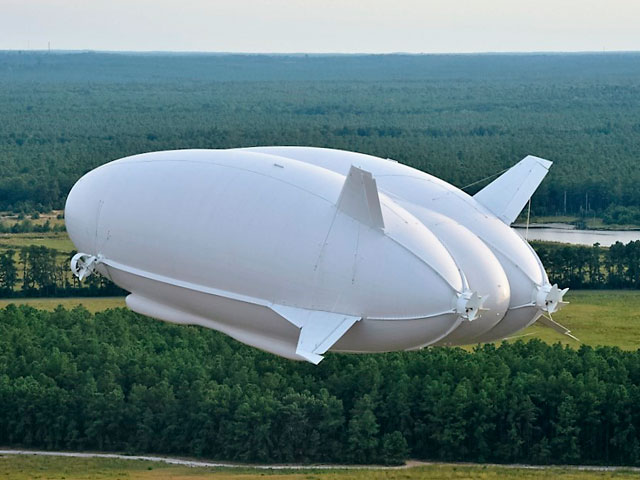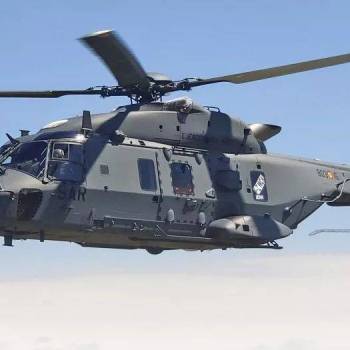
The world’s largest and longest aircraft is to take off at Cardington Airfield in Bedfordshire, UK.
Airlander 10, formerly known as the Army’s Long Endurance Multi-Intelligence Vehicle (LEMV) is preparing to fly as early as next month in the UK, according to Hybrid Air Vehicles officials.
The aircraft essentially consists in a 92-metre blimp filled with 38,000 cubic meters of helium. The helium is retained within an aerofoil-silhouette envelope that reportedly increases lift efficiency by 40%. There are four propellers—two at the back, one on the front left, one on the front right—that provide vectored thrust from four V8 turbo-diesel engines.
Below the front of the envelope is a small cockpit capsule with space for a pilot and crew members. It is a low-fuel consumption aircraft, capable of staying in the air up to two weeks in a row without crew, or five days with crew. The Airlander 10 will theoretically be able to carry payloads of up to 10 tons. Furthermore, HAV has plans to build an Airlander 50 in the future, too, which can lift five times as much.
The Airlander 10 was originally developed by Hybrid Air Vehicles and Northrop Grumman for the US Army. The service had originally intended to deploy the airship to Afghanistan by December 2011, acting as surveillance and communications platforms.
The Army canceled the program in early 2013 shortly after its first flight, due to what it said at the time were technical and performance challenges and limitations imposed by constrained resources. Hybrid Air Vehicles bought the LEMV back from the US Army in 2013 without the Northrop Grumman sensor suite that was part of the program, and continued its development in the UK.
Now, after a £3.4 million grant from the UK government, £2 million from the EU, and a further £2 million in crowdsourced funding, the Airlander 10 is almost ready for its second flight ever, and its first flight in the UK.

The hybrid airship is going through ground testing this month and “will start the flight testing”, Andy Barton, the company’s business development director for commercial markets, said at SOFEX, a special operations exhibition in Jordan. The Airlander 10 will operate under civilian flight regulations with tight restriction under an initial airworthiness release which become more permissive as the aircraft gains flight hours.
The company believes it has solved most of the issues that came up during the first flight by using computer simulations. “Of course, it will be hard to tell if everything is resolved until the airship flies”, Barton added, noting it’s unlikely that the ship will fly flawlessly the first time in the air.
Hybrid Air Vehicles sees much potential for the aircraft, from special operations intelligence, surveillance and reconnaissance to an airborne communications hub to cargo resupply.
Source: Defense News, aerospace-technology, Hybrid Air Vehicles.

Written by Patricia Ruiz
Patricia Ruiz is Environmental and Forestry Engineer and a Supply Chain Management Expert


